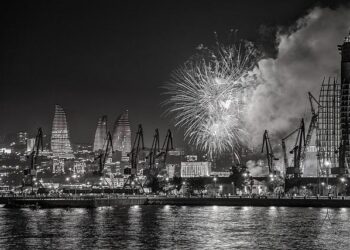Portugal continues to captivate travelers worldwide, earning its place as a top destination in Lonely Planet’s latest travel guide. From the sun-drenched beaches of the Algarve to the historic streets of Lisbon and Porto’s famed wine cellars, Portugal offers a rich tapestry of culture, cuisine, and natural beauty. As the country redefines its appeal for 2024, experts at Lonely Planet highlight must-see sites and off-the-beaten-path experiences, solidifying Portugal’s reputation as a must-visit spot on the global travel map.
Discover Portugal’s Hidden Coastal Gems for Authentic Experiences
Far from the crowds of Lisbon and Porto, Portugal’s lesser-known coastline offers a treasure trove of authentic experiences that capture the spirit of traditional coastal living. From the dramatic cliffs of Costa Vicentina to the tranquil fishing villages of the Alentejo coast, these hidden gems provide a rare glimpse into a slower, more genuine way of life. Visitors can explore winding cobblestone streets, savor freshly caught seafood at family-run taverns, and watch local artisans at work, preserving cultural crafts handed down through generations.
Highlights of Portugal’s undiscovered coastal spots include:
- Vila Nova de Milfontes: A seaside town known for its pristine beaches, vibrant seafood markets, and laid-back atmosphere.
- Berlengas Archipelago: A protected nature reserve boasting crystal-clear waters and seabird colonies, perfect for eco-tourists.
- Comporta: A chic yet understated retreat famous for its rice fields, dunes, and unspoiled shores.
| Destination | Best Time to Visit | Unique Experience |
|---|---|---|
| Vila Nova de Milfontes | Late Spring – Early Fall | Sunset fishing boat tours |
| Berlengas Archipelago | Summer months | Snorkeling among shipwrecks |
| Comporta | All year round | Birdwatching and rice-field walks |
Savor the Flavors of Portuguese Cuisine Beyond Lisbon’s Tourist Spots
While Lisbon offers an unmistakable taste of Portugal’s culinary heritage, venturing beyond the capital reveals a treasure trove of authentic flavors often overlooked by travelers. In the northern city of Porto, for instance, the hearty Francesinha sandwich-smothered in a rich, spicy sauce-showcases the region’s love for robust, comforting dishes. Meanwhile, the Alentejo region captivates food enthusiasts with its slow-cooked pork and aromatic bread soups, emphasizing simple yet deeply satisfying ingredients. Exploring traditional markets and family-run taverns across the country unveils a culinary landscape rooted in centuries-old recipes and local produce.
To truly immerse yourself in Portuguese dining culture, seek out these regional specialties, often overshadowed by Lisbon’s famed pastel de nata and bacalhau dishes:
- Cataplana de Mariscos – a seafood stew from the Algarve cooked in a distinctive clam-shaped copper vessel.
- LeitĂŁo da Bairrada – roasted suckling pig from the Bairrada region, famed for its crispy skin and tender meat.
- Arroz de Cabidela – a rich rice dish made with chicken or rabbit blood, popular in central Portugal.
- Queijo Serra da Estrela – the region’s renowned sheep’s milk cheese with a creamy texture and bold flavor.
| Region | Signature Dish | Main Ingredients |
|---|---|---|
| Alentejo | Carne de Porco Ă Alentejana | Pork, clams, coriander, garlic |
| Madeira | Espetada | Beef skewers, garlic, laurel |
| Minho | Papas de Sarrabulho | Rice, pork blood, smoked meats |
| Algarve | Dom Rodrigos | Almonds, sugar, egg yolks |
Expert Tips for Navigating Portugal’s Historic Cities Like a Local
When wandering through Portugal’s centuries-old streets, embrace the art of slow travel. Instead of rushing from landmark to landmark, pause at neighborhood cafes where the scent of freshly baked pastĂ©is de nata fills the air. Engage with locals by practicing a few simple Portuguese phrases like “Bom dia” (Good morning) and “Obrigado/Obrigada” (Thank you), which go a long way toward opening doors to hidden gems. Don’t hesitate to explore beyond the main squares-tiny alleys and side streets often contain the most authentic charm, from tiled walls to artisan shops.
Timing your visits to key sites can transform your experience from crowded to intimate. For instance, arriving at the JerĂłnimos Monastery in Lisbon during the early morning or late afternoon hours not only avoids peak tourist flux but also grants you peaceful moments with spectacular lighting for photography. To stay organized, here’s a quick guide on the best times to explore popular spots without the crowds:
| Site | Optimal Visit Time | Tip |
|---|---|---|
| JerĂłnimos Monastery | 8:30 AM / 4:00 PM | Arrive early to avoid groups |
| Alfama District | Late afternoon | Enjoy quieter alleyways and local music |
| Porto Ribeira | Evening | Watch riverside nightlife come alive |
- Use public transport for a true local experience-trams and trains offer picturesque views and insights into daily life.
- Try traditional dishes at family-run taverns rather than tourist-centric eateries to savor authentic flavors.
- Keep cash handy in smaller denominations, as some historic sites and shops may not accept cards.
The Conclusion
As Portugal continues to captivate travelers with its rich history, vibrant culture, and stunning landscapes, it remains a must-visit destination for those seeking both adventure and authenticity. Lonely Planet’s comprehensive guide offers invaluable insights to help visitors navigate the country’s diverse regions, from the sun-drenched beaches of the Algarve to the historic streets of Lisbon and Porto. Whether planning a short getaway or an extended exploration, travelers can rely on trusted recommendations to make the most of their Portuguese journey. With its blend of tradition and modernity, Portugal stands poised to welcome a new wave of curious explorers in the years ahead.















